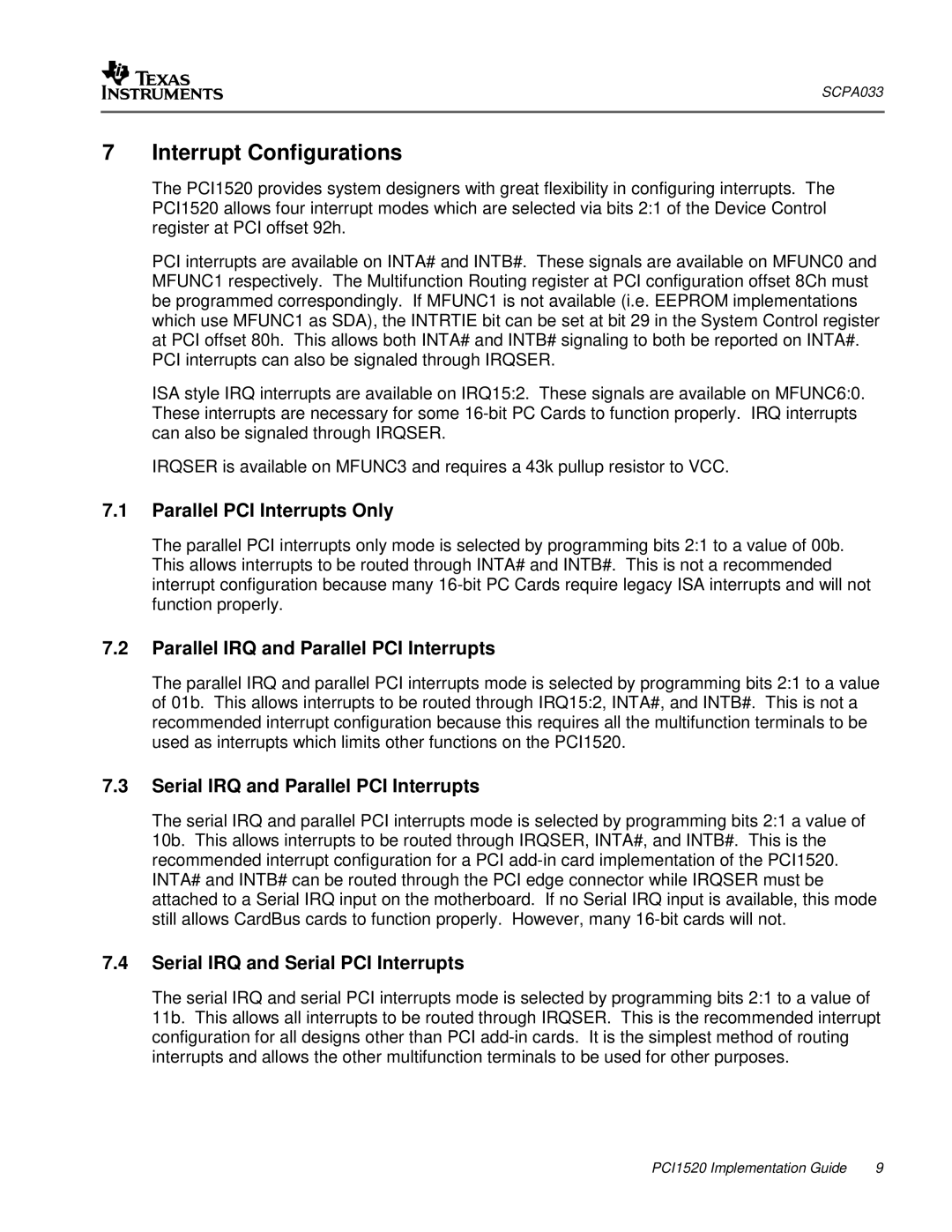SCPA033
7 Interrupt Configurations
The PCI1520 provides system designers with great flexibility in configuring interrupts. The PCI1520 allows four interrupt modes which are selected via bits 2:1 of the Device Control register at PCI offset 92h.
PCI interrupts are available on INTA# and INTB#. These signals are available on MFUNC0 and MFUNC1 respectively. The Multifunction Routing register at PCI configuration offset 8Ch must be programmed correspondingly. If MFUNC1 is not available (i.e. EEPROM implementations which use MFUNC1 as SDA), the INTRTIE bit can be set at bit 29 in the System Control register at PCI offset 80h. This allows both INTA# and INTB# signaling to both be reported on INTA#. PCI interrupts can also be signaled through IRQSER.
ISA style IRQ interrupts are available on IRQ15:2. These signals are available on MFUNC6:0. These interrupts are necessary for some
IRQSER is available on MFUNC3 and requires a 43k pullup resistor to VCC.
7.1Parallel PCI Interrupts Only
The parallel PCI interrupts only mode is selected by programming bits 2:1 to a value of 00b. This allows interrupts to be routed through INTA# and INTB#. This is not a recommended interrupt configuration because many
7.2Parallel IRQ and Parallel PCI Interrupts
The parallel IRQ and parallel PCI interrupts mode is selected by programming bits 2:1 to a value of 01b. This allows interrupts to be routed through IRQ15:2, INTA#, and INTB#. This is not a recommended interrupt configuration because this requires all the multifunction terminals to be used as interrupts which limits other functions on the PCI1520.
7.3Serial IRQ and Parallel PCI Interrupts
The serial IRQ and parallel PCI interrupts mode is selected by programming bits 2:1 a value of 10b. This allows interrupts to be routed through IRQSER, INTA#, and INTB#. This is the recommended interrupt configuration for a PCI
7.4Serial IRQ and Serial PCI Interrupts
The serial IRQ and serial PCI interrupts mode is selected by programming bits 2:1 to a value of 11b. This allows all interrupts to be routed through IRQSER. This is the recommended interrupt configuration for all designs other than PCI
PCI1520 Implementation Guide | 9 |
